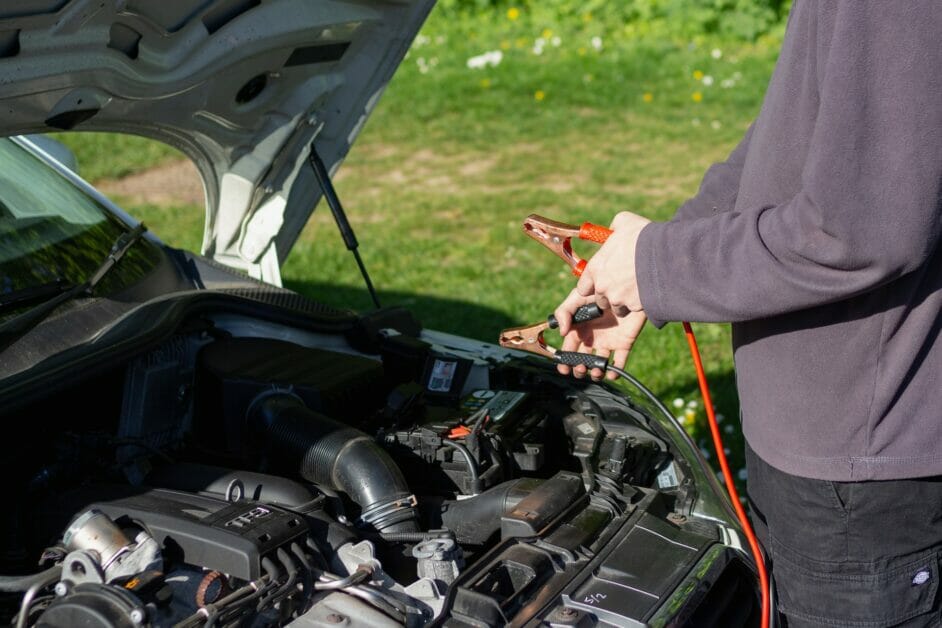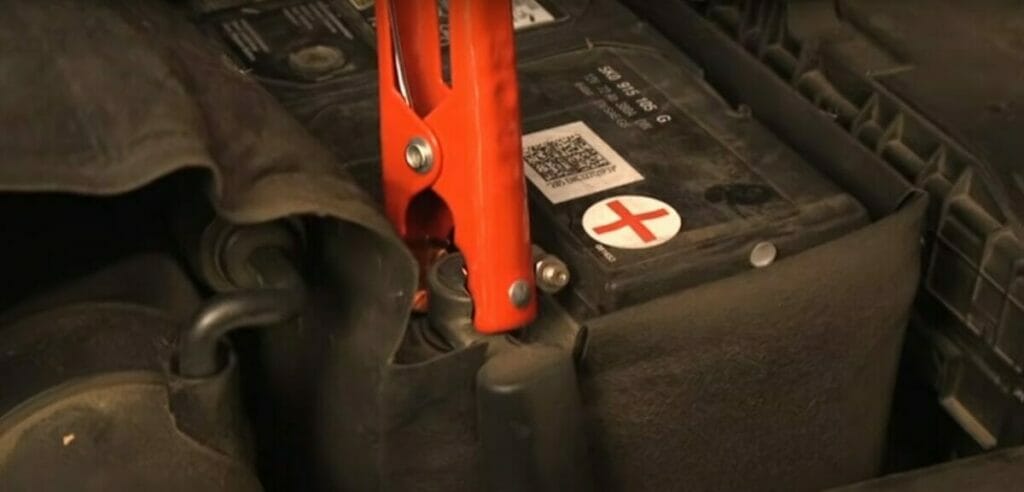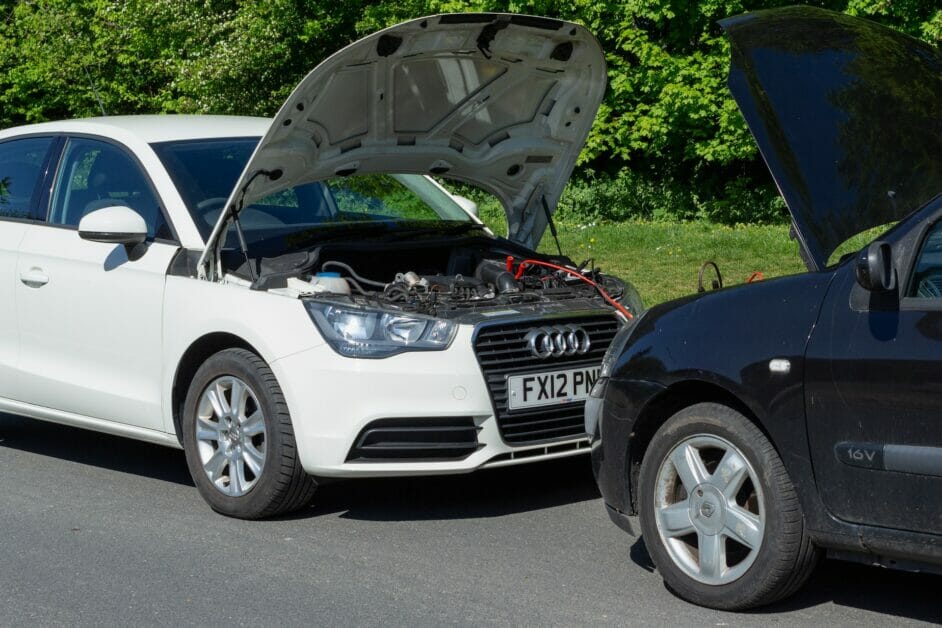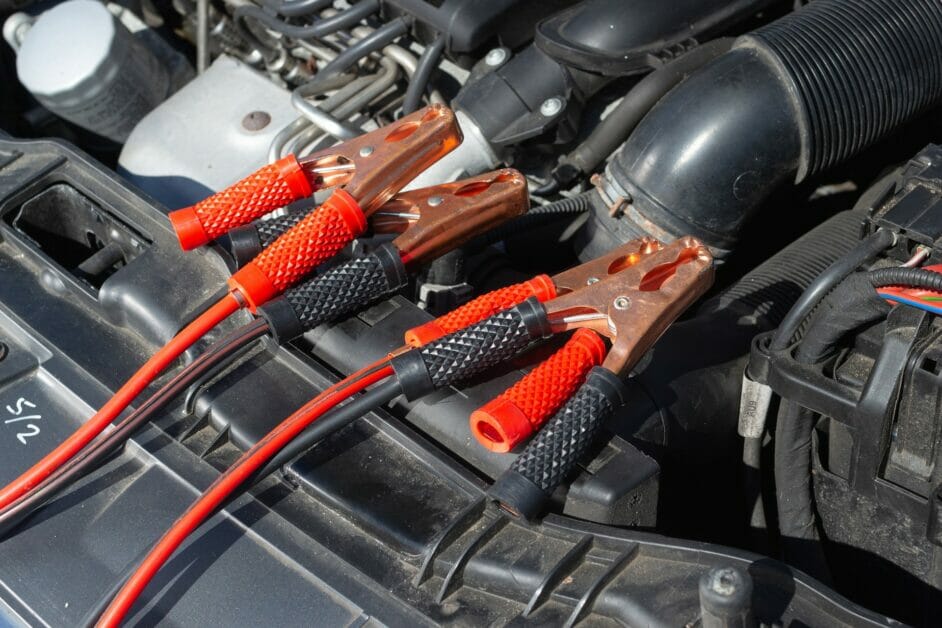Do I Need to Replace Battery After Jump Start? (Facts & Tips)

You know those times when your car battery dies, and you’ve got to pull out the jumper cables? I’ve been there too. Many wonders if we need to replace the battery after a jump start.
The short answer is: It depends. Jump-starting a car doesn’t necessarily mean the battery must be replaced immediately.
How many Jump Starts Before You Need To Replace the Battery–
Please note that the numbers below are only rough estimates.
| Battery Health | Estimated Number of Jump Starts Before Dying |
|---|---|
| Excellent (New Battery) | 20 – 50 |
| Good (A Few Years Old) | 10 – 20 |
| Average (Several Years Old) | 5 – 10 |
| Poor (Near End of Life) | 1 – 5 |
In this article, we’ll look at the factors to consider when deciding whether to replace your battery after a jump-start.

How Can Jump-Starting Damage Your Battery?
Jump-starting a battery can potentially damage it in several ways:
- Overcharging: When you jump-start a dead battery, there’s a risk of overcharging. Overcharging can cause the electrolyte in the battery to evaporate and lead to internal structural damage.
- Voltage Spikes: Improper jump-starting can lead to voltage spikes. These can harm your vehicle’s battery and other electrical components, including onboard computers, sensors, and other electronic devices.
- Reversed Polarity: Accidentally reversing the polarity (connecting positive to negative) during a jump-start can cause significant damage to both the battery and the vehicle’s electrical system. This can lead to a short circuit.
- Battery Age and Condition: If a battery is old or in poor condition, jump-starting it can cause further damage. A battery with a shorted cell or other internal issues may not react well to a sudden influx of power.
In general, jump-starting should be done carefully, following the vehicle’s and the jump-starter’s instructions. When performed correctly, it is usually a safe procedure.
Signs You Need a New Battery After a Jump Start
Several factors determine whether your battery needs to be replaced after jump-starting your car. Here are some key things to consider:
- Age: If your battery is more than three years old, it’s more likely that jump-starting could be the final straw that pushes the battery over the edge – so replacing it might be a wise move.
- Condition: If your battery was already showing signs of wear and tear – such as taking longer to start the engine or not holding a charge as well as it used to – then jump-starting could further damage the battery and increase the likelihood of needing to replace it.
- Cause of Dead Battery: If your battery died due to leaving the lights on, for example, and you quickly jump-started it once you realized your mistake, there’s a good chance your battery is still in good condition.
- However, if your battery died due to a more serious issue – such as a problem with the alternator or a parasitic draw – then jump-starting the car alone won’t fix the underlying issue, and you may still need to replace the battery.
It’s also worth noting that modern car batteries are designed to be more resilient and able to handle jump-started (within reason). However, there’s no guarantee that your specific battery will survive a jump-start unscathed.
Signs of a Bad Battery
Recurring Jump Starts
Friend, let me tell you, if you constantly need a jump-start to get your car moving, that’s a clear sign your battery’s seen better days. Sure, a single jump-start might be a one-time thing, but investing in a new battery is high time if you’re jump-starting your car regularly.
Slow Cranking Engine
If your car takes a little longer than usual to start or the engine cranks more sluggishly, you might be dealing with a weak battery. Make sure to pay attention to how your engine sounds when it starts. If it’s groaning and moaning, well, my friend, that battery is probably ready for a replacement.
Electrical Issues
Don’t forget about those pesky electrical issues! You know, like flickering headlights, dimming interior lights, and malfunctioning accessories. All these things can point to a struggling battery that’s just not providing enough juice to power your car’s electrical needs. You might want to get a new battery when you notice that.
Remember, it’s better to be proactive about your battery than risk being stranded with a dead one. So, watch for these signs, and you’ll be able to keep cruising down the road with no issues.

Understanding Jump Starts
How Jump Starts Work
Connecting jumper cables to a healthy battery of another vehicle gives your dead battery a much-needed boost.
The process is pretty simple: you connect the positive (red) cable to the positive terminal of both batteries and then connect the negative (black) cable to the working battery’s negative terminal. Finally, you attach the other end of the negative cable to an unpainted metal surface on your car, like a bolt or bracket, to serve as a grounding point.
Once everything is connected correctly, the live vehicle’s engine is started, transferring electrical power to your dead battery.
Temporary vs. Permanent Solutions
Now that we’ve covered how jump-starts work let’s discuss whether they’re a temporary or permanent solution for your dead battery. A single jump start can be all your battery needs to get back on track. After a successful jump, your car’s alternator should recharge the battery while you drive. For instance, keeping the engine running for at least 30 minutes should help recharge the battery.
However, remember that continuous jump starts might not be a long-term fix. If you frequently need a jump, it could be a sign of a deeper issue, like an aging battery or a problem with your alternator. Replacing the battery after a jump start might be necessary, especially if it is old or damaged.
Common Mistakes While Jump-Starting a Car
The following table provides information on avoiding common mistakes during jump starts.
| Common Mistakes | Prevention Tips |
|---|---|
| Incorrect Cable Connections | – Drive the vehicle for at least 30 minutes after jump-starting to allow the alternator to recharge the battery fully. |
| Leaving the Vehicles Running for Too Long | – Disconnect the jumper cables as soon as the dead vehicle starts.- Allow the vehicle to run independently to prevent strain on electrical systems. |
| Insufficient Charging Time | – Identify and address issues causing frequent battery failures, such as a weak battery, alternator problems, or electrical component issues. |
| Reverse Polarity | – Double-check cable connections to ensure proper polarity.- Connect the positive cable first and then the negative cable to avoid reverse polarity. |
| Using Damaged or Frayed Cables | – Regularly inspect jumper cables for wear or damage.- Replace damaged cables with a new, reliable set. |
| Dependence on Jump Starts | – Identify and address underlying issues causing frequent battery failures, such as a weak battery, alternator problems, or electrical component issues. |
| Ignoring Battery Maintenance | – Regularly inspect the battery for corrosion and clean the terminals.- Ensure tight connections.- Consider periodic battery testing to monitor health. |
| Improper Grounding Point | – Connect the negative cable to an unpainted metal surface on the engine block or chassis of the dead vehicle for a better ground connection. |
Consider these factors when deciding if it’s time for a battery replacement. And as always, consult a professional if you’re unsure about your car’s needs.

References
- AAA (American Automobile Association). https://www.aaa.com/International/
- Battery Council International (BCI). https://batterycouncil.org/
- NAPA Know How. https://knowhow.napaonline.com/6-signs-you-need-to-have-your-car-battery-replaced/
Video References
Cars.com
